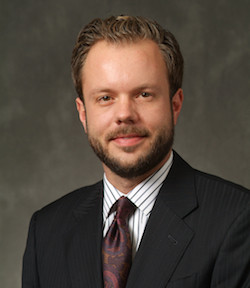As frequent counterparties to high-frequency traders, buy-side investors have ‘skin in the game’ and need to know whether exchanges provide fair market access, and if their playing fields are level.
Based on the fact that institutions continue to be huge end users of exchanges’ trade-execution services, the answers seem to be yes. But there are reservations.
Rapid technological advances over the past decade, combined with a proliferation of exchange services and order types, have empowered high-frequency traders disproportionately more than less-active market participants, some buy-siders say. The evolution has produced some benefit and some harm, and opinions are mixed regarding the net result.
“Technology has played an important role in the evolution of market structure and efficiency,” said Ryan Larson, head of equity trading in the U.S. at RBC Global Asset Management, which manages $42 billion. “However, many practices associated with high-frequency trading continue to prove more detrimental to market structure than they are beneficial, and I think all market participants — exchanges, regulators, the sell side and the buy side — need to work together to make sure those detrimental aspects are addressed.”

Ryan Larson, RBC Asset Management
Institutional investment managers typically trade through sell-side broker-dealers and do not interface directly with exchanges. But in a less-than-robust market with a heightened emphasis on trade efficiency, investors are looking at exchanges more closely via transaction cost analysis (TCA), which can show trading performance across venues.
For their part, exchanges emphasize that buy-side institutions are valuable customers who are not at a disadvantage when trading with shorter-term market participants. U.S. equity-bourse operators including NYSE Euronext, Nasdaq, Direct Edge, and Bats deploy outreach and education efforts targeting the buy side.
Buy-side firms are on guard. “We have a fiduciary responsibility to protect our clients against all adverse effects of the current market environment, including high-frequency trading,” Larson said. TCA “is an integral part of our best-execution process, and is one of many tools we use in accessing which broker or trading venue to use, the fill rates and liquidity quality of such brokers or venues, and the prevalence and impact of high-frequency trading.”
Larson offered suggestions for which specific aspects of exchange trading need to be reviewed. “At a minimum, maker-taker pricing, payment for order flow and rebates should be addressed immediately. Latency arbitrage, co-location and pay-to-play practices should also be addressed,” he said. “If high-frequency traders claim to provide liquidity to the market, then they should fall under the enforcement of market-maker obligations. Market-wide messaging fees should be imposed, similar to the Canadian model, to eliminate unnecessary noise.”
Mike Earlywine, head trader for North America at $1.2 billion asset manager Ecofin, also cited exchanges’ rebate practice as a sticking point. “One of the biggest issues continues to be rebates, and how exchanges’ efforts to compete with one another has created a business-within-a-business of managing and maximizing those rebates,” Earlywine said. “Standardized rebate rules would be a great way to remove the noise from HFT, while not actually prohibiting it”.
Structure-Driven
“Exchanges are not necessarily overly hospitable” to high-frequency traders, said Madison Gulley, director of global equity trading at Franklin Templeton Investments, which manages more than $823 billion. “Their business model has driven them to pay attention to high-frequency traders, and high-frequency traders have required more out of exchanges. High-frequency traders need technology, communications and speed, and more recently, additional order types as regulations and market dynamics have changed…There is nothing nefarious in decisions to create new order types.”
If high-frequency trading does add to an investor’s trading friction, it’s difficult to isolate it as the causative factor.
“We base our decisions on where to trade broadly,” Gulley told Markets Media. “We do a fair amount of analysis of venues we trade in, and based on that analysis, if an algo is not doing what we expect, we change algos or even change venues. Whether that’s due to high-frequency trading, or a combination of things, is hard to determine.”
High-frequency trading “has decreased spreads and increased liquidity,” Gulley added. “The depth of liquidity is still in question, but it has always been in question.”
Still, high-frequency trading has its seamy side, and institutional-investor concerns linger.
Said Larson, “asking questions such as ‘does liquidity really equate to volume?’, ‘are these new efficiencies really meant to protect and benefit investors, or are they a framework for profit for predatory participants?’, and ‘is all liquidity really good liquidity?’ goes a long way in determining to what degree has high-frequency trading contributed to or detracted from market quality.”
